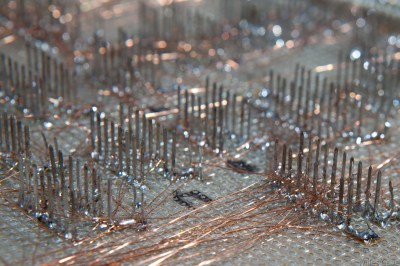Got a broken laptop screen sitting around? If you haven’t already pilfered the LEDs and used the polarizing sheets for screen privacy filters, why not turn it into a unique table lamp? See if you can use more parts of the screen than [alexmaree-ross] did.
This is a simple idea with great-looking results, but the process is a bit fiddly. After all the layers are separated and the LEDs extracted, there’s still the matter of figuring out how they’re wired up. [alexmaree] tested them in pairs to see how they’re grouped together and ultimately powered them with a transformer from an old printer. To build the case, [alexmaree] carefully scored and snapped the pieces from the plastic layer and carefully glued pieces of the polarizing layer on top to give it that underwater infinity mirror look. The finishing touch comes from edging the shade with thin metal from the bezel.
The case could be in any shape you want, but we think the prism is quite appropriate considering the polarizing effects. And it looks really cool when you walk around it, which you can do vicariously after the break.
If the screen still works but laptop doesn’t, why not drive it with an FPGA?
Continue reading “Broken Screen Becomes Polarizing Art Lamp”





 But there’s one more part of this project that amazes us, and that is its construction technique. [OiD] purchased IC sockets with extra long pins and a lot of thin, enamel (insulated) copper wire. A soldering station with a fine tip and high temperature setting allowed him to heat the end of the copper wire to melt its enamel insulation, so it could be soldered to the long pin sockets. Using this method, he assembled the circuit using point-to-point soldering, pretty much like
But there’s one more part of this project that amazes us, and that is its construction technique. [OiD] purchased IC sockets with extra long pins and a lot of thin, enamel (insulated) copper wire. A soldering station with a fine tip and high temperature setting allowed him to heat the end of the copper wire to melt its enamel insulation, so it could be soldered to the long pin sockets. Using this method, he assembled the circuit using point-to-point soldering, pretty much like 










